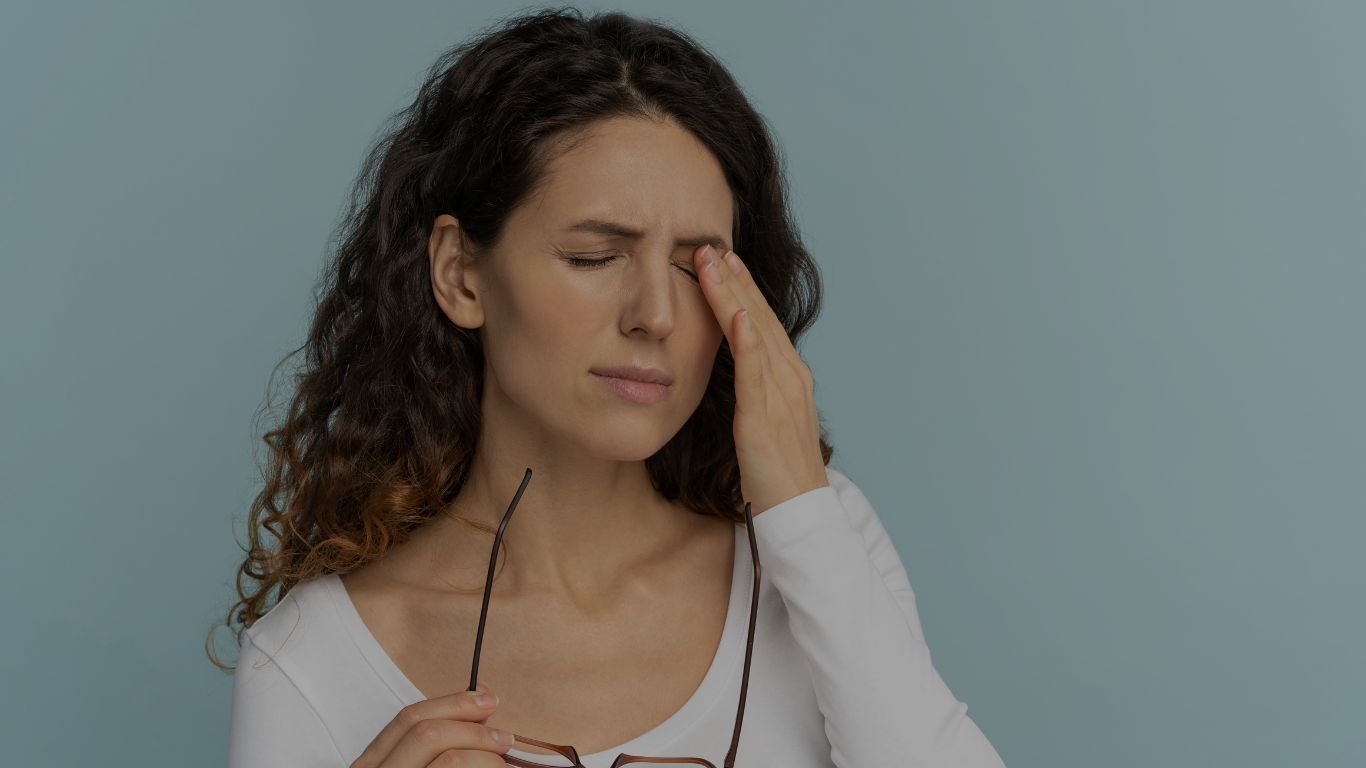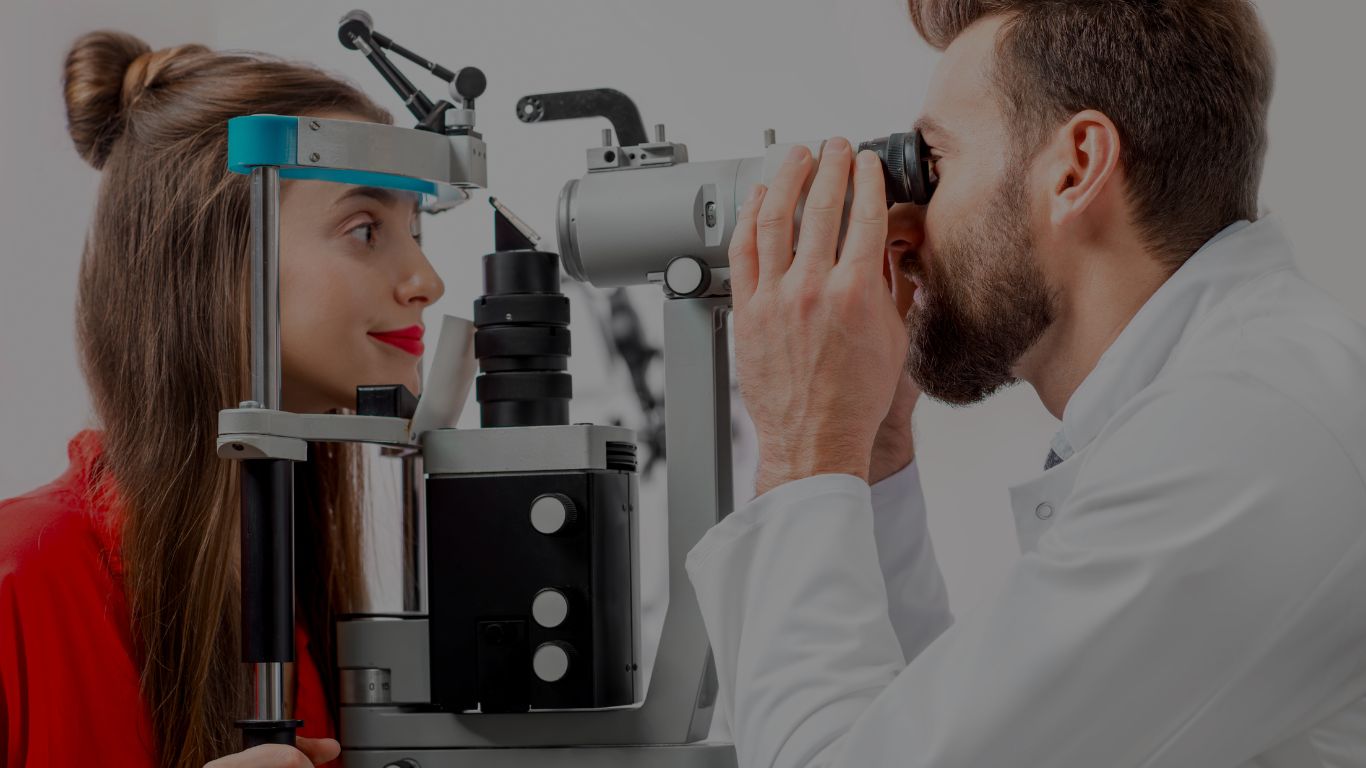Introduction
Dry eyes are a common condition that affects millions of people worldwide. Dry eyes can be caused by a number of factors, including age, certain medical conditions, and environmental factors, such as prolonged computer use or exposure to wind and dry air.
Pain from dry eyes is one of the most debilitating and impactful symptoms. In this article, we’ll
Do Dry Eyes Cause Pain?
While many people associate dry eyes with discomfort and irritation, the question remains whether dry eyes can actually cause pain.
The answer is yes, dry eyes can cause pain, especially in severe cases.
Why Are Dry Eyes Painful?
Dry eyes occur when the tear glands are unable to produce enough tears to lubricate the eyes, leading to dryness and irritation. This dryness can lead to exposure and stimulation of the sensory pain nerve fibers in the cornea.
These nerves signal pain to stimulate the eyes to blink, and to protect the surface of the eyes. These nerves also trigger the lacrimal gland to make tears to lubricate the eyes.
What Does Pain From Dry Eyes Feel Like?
Pain from dry eyes can present itself in different ways, and can vary from person to person. Some common experiences of dry eye pain include:
- Burning or stinging sensation: One of the most common sensations experienced with dry eye pain is a burning or stinging feeling in the eyes. This can be particularly noticeable when you are in a dry environment or after staring at a screen for an extended period of time.
- Gritty or scratchy feeling: Some people describe the feeling of dry eye pain as a gritty or scratchy sensation. This can be due to the dryness and irritation of the eyes, causing a sensation similar to having sand in your eyes.
- Sharp or throbbing pain: In severe cases, dry eye pain can present as a sharp or throbbing sensation. This can be caused by the inflammation of the cornea, which can be exacerbated by the dryness and lack of lubrication in the eyes.
- Discomfort or pressure: Many people with dry eyes describe a general discomfort or pressure in their eyes. This can be due to the dryness and irritation, leading to a feeling of discomfort and pressure in the eye area.
If you are experiencing any of these symptoms, it is important to seek treatment from an eye doctor to find the best course of action for relieving your dry eye pain. Dry eye pain can be managed with a range of treatments, including artificial tears, anti-inflammatory drops, and more advanced treatments like punctal plugs or intense pulsed light therapy. Your eye doctor will be able to help you determine the best treatment options for your specific needs.
How Do You Treat Dry Eye Pain?
Treating dry eye pain is crucial to provide relief and improve the overall quality of life for those who suffer from it. The most effective way to treat dry eye pain will depend on the underlying cause and the severity of your symptoms. Here are some of the most common treatments for dry eye pain:
Artificial Tears
Over-the-counter artificial tears are a simple and effective solution for dry eye pain. They help to lubricate and moisturize the eyes, providing relief from discomfort and pain.
Anti-inflammatory Drops
Anti-inflammatory drops, such as corticosteroid drops, can help to reduce inflammation in the eyes, which can help to relieve pain and discomfort associated with dry eyes.
Punctal Plugs
Punctal plugs are tiny devices that are inserted into the tear ducts to help retain natural tears and provide moisture to the eyes. This can help to alleviate dry eye pain and improve overall eye comfort.
Lifestyle Changes
Making certain lifestyle changes, such as reducing screen time and avoiding dry environments, can help to reduce the symptoms of dry eyes and provide relief from pain.
In-Office Treatments
In more severe cases, your eye doctor may recommend in-office treatments, such as intense pulsed light therapy or Meibomian gland expression, to provide relief from dry eye pain.
How Long Does Dry Eye Pain Last?
The duration of dry eye pain can vary depending on a number of factors, including the severity of the condition, the underlying cause, and the treatments being used. In some cases, people with dry eyes may experience pain that only lasts a few minutes, while others may suffer from chronic pain that lasts for several hours or even days.
Everyone is Different...
In mild cases of dry eyes, pain and discomfort may go away on its own or with the use of over-the-counter artificial tears. For more severe cases, it may take several weeks or even months of treatment to see significant improvement in symptoms.
It's important to note that everyone is different and the duration of dry eye pain can vary greatly from person to person. If you are experiencing dry eye pain that lasts for an extended period of time, it is important to seek treatment from an eye doctor, who can help you find the best course of action to alleviate your symptoms.
In some cases, chronic dry eye pain can be a symptom of an underlying medical condition, such as Sjogren's syndrome or autoimmune diseases. In these cases, treatment may focus on managing the underlying condition in addition to providing relief from dry eye pain.
Overall, the duration of dry eye pain can vary greatly and it is important to seek treatment from an eye doctor to find the best course of action for your specific needs. With the right treatment and care, it is possible to alleviate dry eye pain and improve overall eye comfort.
What Are Other Symptoms Of Dry Eyes?
Dry eyes can cause a range of symptoms beyond just pain. Here are some of the most common symptoms of dry eyes:
- Itching: Dry eyes can cause itching and scratching, which can be particularly noticeable in the corners of the eyes.
- Redness: Red, irritated eyes are a common symptom of dry eyes, which can be caused by the inflammation and irritation associated with the condition.
- Blurred vision: Dry eyes can cause a temporary blurring of vision, as the eyes are not able to properly focus due to the lack of moisture.
- Light sensitivity: Dry eyes can cause light sensitivity, making it difficult to be in bright or sunny environments without experiencing discomfort.
- Excessive tear production: Despite the name, dry eyes can also cause excessive tear production as the eyes try to compensate for the lack of moisture.
- Eye fatigue: The discomfort and irritation associated with dry eyes can lead to eye fatigue, making it difficult to focus and stay alert.
- Contact lens discomfort: Dry eyes can make it difficult to wear contact lenses, as they can become dry and uncomfortable.
These symptoms can range from mild to severe, and they can vary from person to person. If you are experiencing any of these symptoms, it is important to seek treatment from an eye doctor to find the best course of action for relieving your dry eyes. With the right treatment and care, it is possible to alleviate these symptoms and improve overall eye comfort.
When Should You See A Doctor For Pain From Dry Eyes?
If you are experiencing pain from dry eyes, it is important to seek treatment from an eye doctor. In some cases, dry eye pain can be a symptom of an underlying medical condition, and it is important to get a proper diagnosis and treatment plan. Here are some signs that it may be time to see a doctor for your dry eye pain:
- Persistent pain: If your dry eye pain lasts for an extended period of time or is getting worse, it is important to see a doctor.
- Decreased vision: If your dry eyes are causing a decrease in vision or making it difficult to see, it is important to seek medical attention.
- Excessive tearing: If you are experiencing excessive tearing or an overproduction of tears, it may be a sign of an underlying medical condition, and you should see a doctor.
- Chronic dry eyes: If you have been experiencing dry eyes for a long period of time, it may be a sign of a chronic condition, and you should seek medical attention.
- Contact lens discomfort: If you are wearing contact lenses and experiencing discomfort or pain, it is important to see a doctor to determine the cause and find the best course of action.
- Other symptoms: If you are experiencing other symptoms, such as redness, itching, or light sensitivity, it may be a sign of an underlying condition, and you should see a doctor.
Summary
Overall, if you are experiencing pain from dry eyes, it is important to seek treatment from an eye doctor to find the best course of action for relieving your symptoms and improving overall eye health. With the right treatment and care, it is possible to alleviate dry eye pain and improve overall eye comfort.
It's important to note that the most effective way to treat dry eye pain will depend on the underlying cause and the severity of your symptoms. Your eye doctor will be able to recommend the best treatment options for your specific needs and help you find the relief you need.



